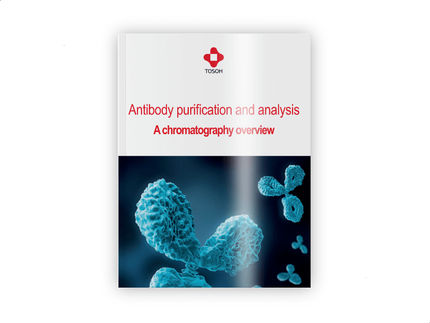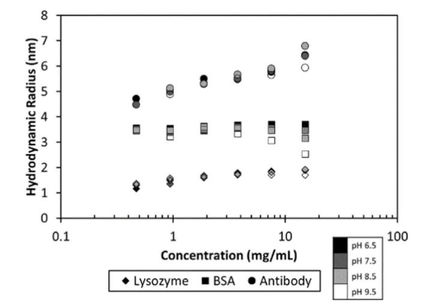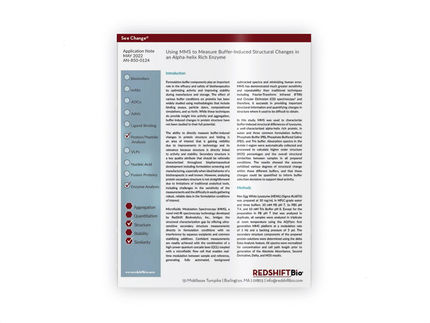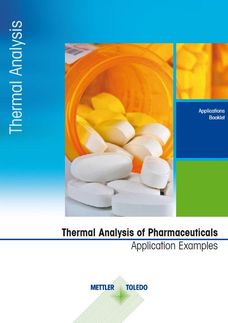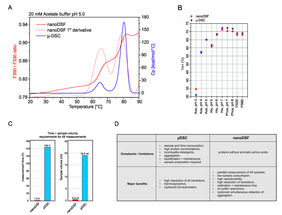NanoTemper Technologies
nanoDSF vs. µDSC: A Comparative Study for Biopharmaceutical Formulation Development
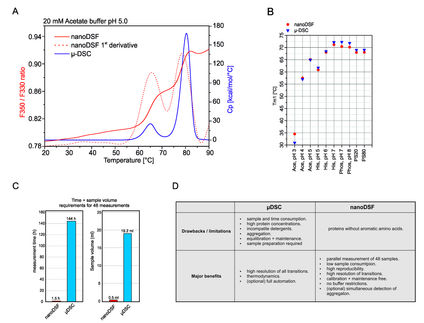
Rapid and Easy Thermal Stability Analysis for Antibody Formulation Development with nanoDSF
The assessment of thermal stability parameters of biologics is an integral part of formulation development in biopharmaceutical research. The ever growing number of biologics in the development pipelines worldwide demands rapid and precise methods to quickly screen large sets of conditions in an easy and straightforward manner. In our study, we compare two methods for the detection of thermal unfolding transition temperatures (Tm) of a therapeutic monoclonal antibody (mAb): nanoDSF, which analyzes changes in the fluorescence emission properties of proteins, and differential scanning calorimetry (µDSC), which detects changes in the heat capacity of a protein solution upon unfolding. nanoDSF and µDSC both provide precise and consistent data. nanoDSF in addition overcomes several limitations by µDSC, such as low throughput and high sample consumption, and thus represents the ideal technology for rapid and precise thermal stability screening in biopharmaceutical development.
Advertisement
White Paper classification
White papers on related topics
Products on related topics
Manufacturers of similar products
See the theme worlds for related content
Topic world Protein analytics
Protein analytics provides a deep insight into these complex macromolecules, their structure, function and interactions. It is essential for discovering and developing biopharmaceuticals, understanding disease mechanisms, and identifying therapeutic targets. Techniques such as mass spectrometry, Western blot and immunoassays allow researchers to characterize proteins at the molecular level, determine their concentration and identify possible modifications.

Topic world Protein analytics
Protein analytics provides a deep insight into these complex macromolecules, their structure, function and interactions. It is essential for discovering and developing biopharmaceuticals, understanding disease mechanisms, and identifying therapeutic targets. Techniques such as mass spectrometry, Western blot and immunoassays allow researchers to characterize proteins at the molecular level, determine their concentration and identify possible modifications.




